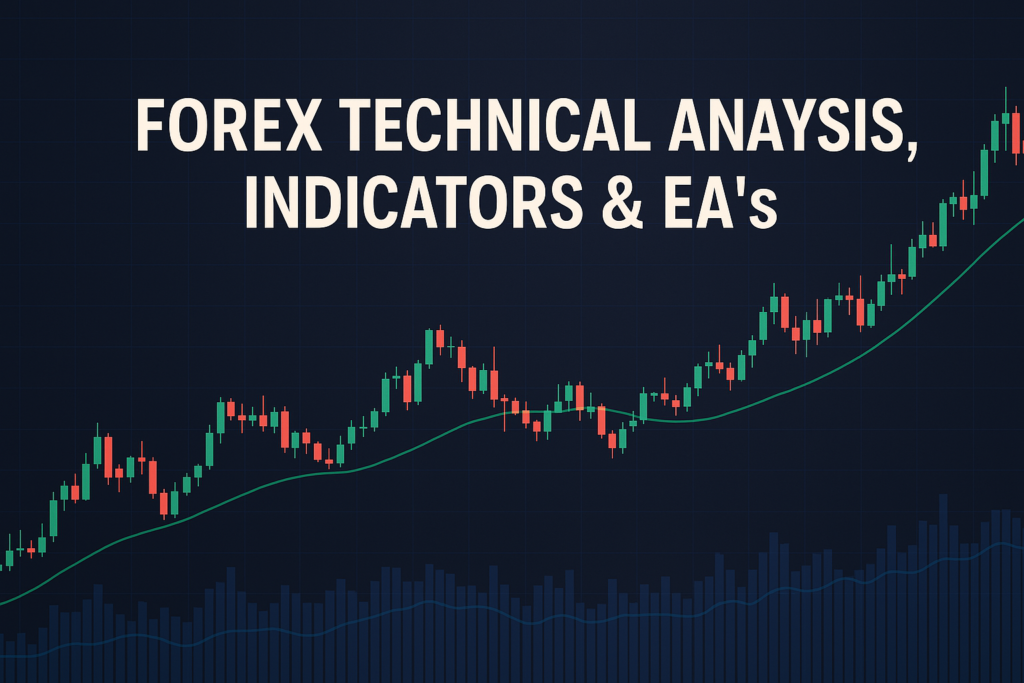
Discover the power of the trend direction force index for effective Forex trading and improve your trading strategies today.
Mastering the Trend Direction Force Index: 7 Essential Strategies for Forex Trading
Have you ever felt lost in Forex trading? The trend direction force index is a tool that can help guide your way. It’s like a compass, showing traders where the market is headed. This index helps you understand the strength and direction of trends in the Forex market, which is crucial for making informed trading decisions.
However, many traders, whether beginners or professionals, often struggle to grasp how to use the trend direction force index effectively. They may find the numbers and indicators overwhelming, leading to confusion and missed opportunities. Understanding this tool is essential for navigating the Forex landscape and improving your trading outcomes.
In this article, we will explore the trend direction force index, its history, its advantages and disadvantages, and how to apply it in your trading strategies. By the end, you’ll have a clearer understanding of how to use this index to enhance your trading skills.
Before we dive deeper into the trend direction force index, it’s important to consider the forex trading time. Knowing when to trade can significantly impact your success in Forex.
What is a trend direction force index?
The trend direction force index (TDFI) is a technical analysis tool used in Forex trading. Simply put, it helps traders identify the strength and direction of market trends. Think of it as a signal that tells you whether the market is moving up, down, or sideways. This tool uses price data over a specific period to provide insights into market movements.
Types of trend direction force index
There are several types of trend direction force index. Some common ones include:
- Simple TDFI: This version uses a straightforward approach to calculate trends.
- Exponential TDFI: This type gives more weight to recent price movements, making it more responsive.
- Weighted TDFI: Similar to exponential, but with different weighting methods for price data.
How trend direction force index smooth out price action
The TDFI works by smoothing out price fluctuations. It filters out the noise in the market, allowing traders to see the underlying trend more clearly. This smoothing helps to reduce the impact of sudden price spikes or drops, providing a clearer view of market behavior.
Common periods used and why
Traders often use specific periods for the trend direction force index, such as 14, 20, or 50 days. These periods are chosen based on the trading strategy and the timeframe being analyzed. Shorter periods might be used for day trading, while longer periods could be better for swing or position trading. The choice of period affects how sensitive the index is to price changes.
The History of trend direction force index: How It Became Popular
Origin of trend direction force index
The trend direction force index was developed by a trader who wanted to create a tool that could help others navigate the complexities of the Forex market. Born out of necessity, it gained traction as traders sought reliable ways to analyze market trends.
When did traders start using it widely?
As the Forex market grew and more traders entered the scene, the trend direction force index became increasingly popular. It was embraced by both novice and experienced traders who recognized its potential to enhance their trading strategies.
Real-life stories
There are numerous accounts of professional traders who have made significant profits by incorporating the trend direction force index into their trading plans. For instance, one trader used the TDFI to identify a strong upward trend in a currency pair and capitalized on it, leading to impressive gains. Such stories inspire others to learn and use this valuable tool.
Advantages and Disadvantages of trend direction force index
Advantages:
- Helps identify trends easily: The TDFI simplifies trend analysis, making it easier for traders to spot opportunities.
- Useful for dynamic support and resistance: It helps traders set realistic support and resistance levels based on trend strength.
- Works well for crossover strategies: The TDFI can be effectively used in conjunction with other indicators for crossover trading strategies.
Disadvantages:
- lags behind price movements: The TDFI may not react quickly to sudden market changes, leading to potential missed opportunities.
- Can give false signals in sideways markets: When the market is not trending, the TDFI might provide misleading signals.
How to Apply trend direction force index on MT4 & MT5
Step-by-step guide to adding trend direction force index on charts
Adding the trend direction force index to your MT4 or MT5 chart is straightforward. Just go to the indicators section, find the TDFI, and drag it onto your chart. This will display the index, helping you analyze trends visually.
Customizing trend direction force index settings
You can customize the TDFI settings to suit your trading style. Adjust the period, colors, and types according to your preferences. This personalization can enhance your trading experience and improve your decision-making process.
Saving templates for easy application
Once you have set up the trend direction force index the way you like it, save it as a template. This way, you can easily apply the same settings in future trades without starting from scratch.
5 to 7 Trading Strategies Using Only trend direction force index
All Time Frame Strategy (M5 to D1)
This strategy can be used across different time frames. Traders look for when the TDFI crosses a certain threshold to make buy or sell decisions. For example, if the TDFI crosses above the zero line, it may signal a buy opportunity.
Trending Strategies
When the trend direction force index shows a strong trend upwards, traders can enter buy positions. Conversely, if it indicates a strong downward trend, they may look for sell opportunities. This strategy focuses on riding the trend for maximum gains.
Counter Trade Strategies
In this strategy, traders look for signs of a reversal when the TDFI begins to turn. For example, if a strong downtrend is seen but the TDFI starts to rise, it might indicate that a reversal to the upside is coming.
Swing Trades Strategies
Using the TDFI, traders can identify potential swing trade setups. For example, if the TDFI shows a weakening trend, it could signal a good time to enter a trade that takes advantage of a price swing.
5 to 7 Trading Strategies Combining trend direction force index with Other Indicators
All Time Frame Strategy (M5 to D1)
This strategy combines the TDFI with moving averages. When the TDFI is above the moving average, it could indicate a buy signal. Conversely, when it’s below, it could signal a sell opportunity.
Trending Strategies
Traders can combine the TDFI with Relative Strength Index (RSI) to confirm trends. If both indicators show a strong trend, it may indicate a higher probability of success in the trade.
Counter Trade Strategies
Combining the TDFI with Bollinger Bands can help identify potential reversals. When the price touches the upper band and the TDFI starts to drop, it may signal a sell opportunity.
Swing Trades Strategies
Using the TDFI alongside Fibonacci retracement can enhance swing trading strategies. If the TDFI shows a reversal near a Fibonacci level, it may be a good indication to enter a trade.
Now, let’s take a quick look at the USDJPY analysis April 30, 2025, which can provide insights into current market trends and forecasts.
Top 10 FAQs About trend direction force index
1. What is the trend direction force index?
The trend direction force index is a tool used to measure the strength and direction of market trends in Forex trading.
2. How do I calculate the trend direction force index?
The calculation involves using price data over a specific period to assess market movements.
3. Can beginners use the trend direction force index?
Yes, beginners can use the TDFI. It simplifies trend analysis and helps traders make informed decisions.
4. What are the best settings for the trend direction force index?
Common settings include periods of 14, 20, or 50 days, depending on your trading strategy.
5. How does the trend direction force index help in trading?
The TDFI helps traders identify trends, set support and resistance levels, and improve trading strategies.
6. What are the limitations of the trend direction force index?
The TDFI can lag behind price movements and may give false signals in non-trending markets.
7. How can I combine the trend direction force index with other indicators?
You can use it alongside moving averages, RSI, or Bollinger Bands to confirm signals and improve decision-making.
8. Is the trend direction force index suitable for all trading styles?
Yes, it can be used in various trading styles, including day trading, swing trading, and position trading.
9. How often should I check the trend direction force index?
It depends on your trading strategy, but many traders check it regularly to stay updated on market trends.
10. Can I use the trend direction force index for long-term trading?
Yes, the TDFI can be beneficial for long-term trading by helping to identify major trends over time.
In conclusion, understanding the trend direction force index is crucial for successful Forex trading. Key takeaways include its ability to identify trends, its advantages and disadvantages, and various strategies to implement. Remember to experiment with different strategies using simulated accounts before committing real money. Happy trading!
Expand your knowledge with proven strategies from FRED (St. Louis Fed), Bankrate
Expand Your Knowledge
- 📌 Forex Trading Learning Road Map
- 📌 Forex Trading Course with no Fees
- 📌 Forex Trading Issues, Problems, and Solutions
- 📌 Forex Daily Forecast & Live Updates
- 📌 Forex Fundamental & News Analysis: Tomorrow’s Market Movers & Trade Opportunities
- 📌 Forex Education Hub: Learn & Profit
- 📌 Forex Technical Analysis, Indicators & EA’s
Start Trading Today
Ready to take your forex trading to the next level? Open an account with Exness, one of the most trusted platforms in the industry. 👉 Sign Up Now and trade with confidence!
My recommended broker stands out with ultra-low spreads for beginners, instant withdrawals, and zero spread accounts for pro traders.
Trusted since 2008, lightning-fast execution, no hidden fees, and a secure, transparent trading environment—giving you the edge you need to succeed. 🚀
Watch this helpful video to better understand trend direction force index:
In the latest video discussing forex trading indicators, the host compares the MACD indicator to a Swiss Army knife, suggesting that while it can perform multiple functions, it doesn’t excel at any of them. This analogy received some pushback, but the main takeaway is to be cautious of indicators that try to do too much. The video introduces the TDFI indicator, a hybrid confirmation and volume indicator that attempts to provide clearer signals for traders. The host emphasizes that while the TDFI was created in 1993, it could still be relevant today. It offers two main functionalities: helping traders identify whether to buy or sell based on its color-coded signals and acting as a volume indicator by keeping traders out of choppy market conditions. The visual representation of the indicator is designed to show bullish, bearish, and neutral territories, guiding traders on when to enter or exit trades effectively.
The testing results for the TDFI indicator were promising. When applied to popular currency pairs like EUR/USD, gold, and Bitcoin, the indicator demonstrated impressive return on investment (ROI) and favorable win-loss ratios. The host notes that in the forex market, maintaining a good win-loss ratio is more critical than in other markets like crypto. The video encourages viewers to test the TDFI indicator for themselves, providing links to resources where they can find more detailed information and download the indicator. Additionally, the host highlights the importance of proper testing and understanding how to tweak the indicator settings to optimize performance. As the video wraps up, viewers are encouraged to subscribe and follow for more content, emphasizing the commitment to providing valuable insights and tools for forex trading enthusiasts.
In the realm of forex trading, understanding forex risk management is crucial for traders seeking to protect their investments. Effective risk management strategies can help mitigate potential losses and maximize gains, which is essential in the volatile forex market. By implementing sound risk management techniques, traders can establish clear guidelines for their trading activities, including setting appropriate stop-loss orders, determining position sizes based on account equity, and diversifying their trading portfolio. This approach not only safeguards capital but also fosters long-term success in forex trading.
YouTube Video Library: Related Videos
trend direction force indicator
Trend Direction Force Index Forex Indicator MT4 – Best Review For 1 Minute
The Trading Indicator For 87% Accurate Breakout Entries
Trade Pullbacks With This Force Index Strategy! [Backtested 890x]
Elders Force Index Indicator Technical Analysis for trading strategies
Smoothed Trend Direction Force Index Indicator FREE DOWNLOAD
One of Best Forex Trading Indicators Force Index! It will change how you trade!
Note: The video above is embedded from YouTube and is the property of its original creator. We do not own or take responsibility for the content or opinions expressed in the video.



